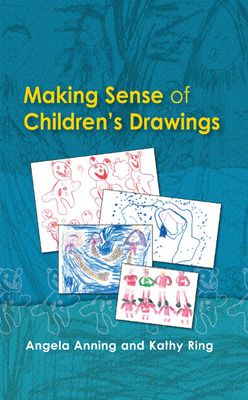Making Sense of Children's Drawings
Receive via shipping:
- Colour, print bound version of the complete text
Chapter Two Young children learning to draw
Chapter Three Overview of the project
Chapter Four Luke’s story
Chapter Five Simon’s story
Chapter Six Holly’s story
Chapter Seven Lianne’s story
Chapter Eight Themes from the seven children’s drawings
Chapter Nine Implications
Shirley Brice Heath, Professor Emerita, Stanford University and Professor at Large, Brown University, USA
"This book is unique in giving an in-depth account of the way young children approach drawing at home and at school. It shows the cognitive value of drawing in children’s intellectual and emotional development and sets out the truly extraordinary range of drawing types that are used and understood by three to six year olds…. It is an invaluable experience."
Professor Ken Baynes, Department of Design and Technology, Loughborough University, UK
This book explores how young children learn to draw and draw to learn, at home and school. It provides support for practitioners in developing a pedagogy of drawing in Art and Design and across the curriculum and provide advice for parents about how to make sense of their children’s drawings.
Making Sense of Children’s Drawings is enlivened with the real drawings of seven young children, collected over three years. These drawings stimulated dialogues with the children, parents and practitioners whose voices are reported in the book. The book makes a powerful argument for us to radically re-think the role of drawing in young children’s construction of meaning, communication and sense of identity. It provides insights into the influence of media and consumerism, as reflected in popular visual imagery, and on gender identity formation in young children. It also offers strong messages about the overemphasis on the three Rs in early childhood education.
Key reading for students, practitioners and parents who want to encourage young children’s drawing development without ‘interfering’ with their creativity, and who need a novel approach to tuning into young children’s passions and pre-occupations.

